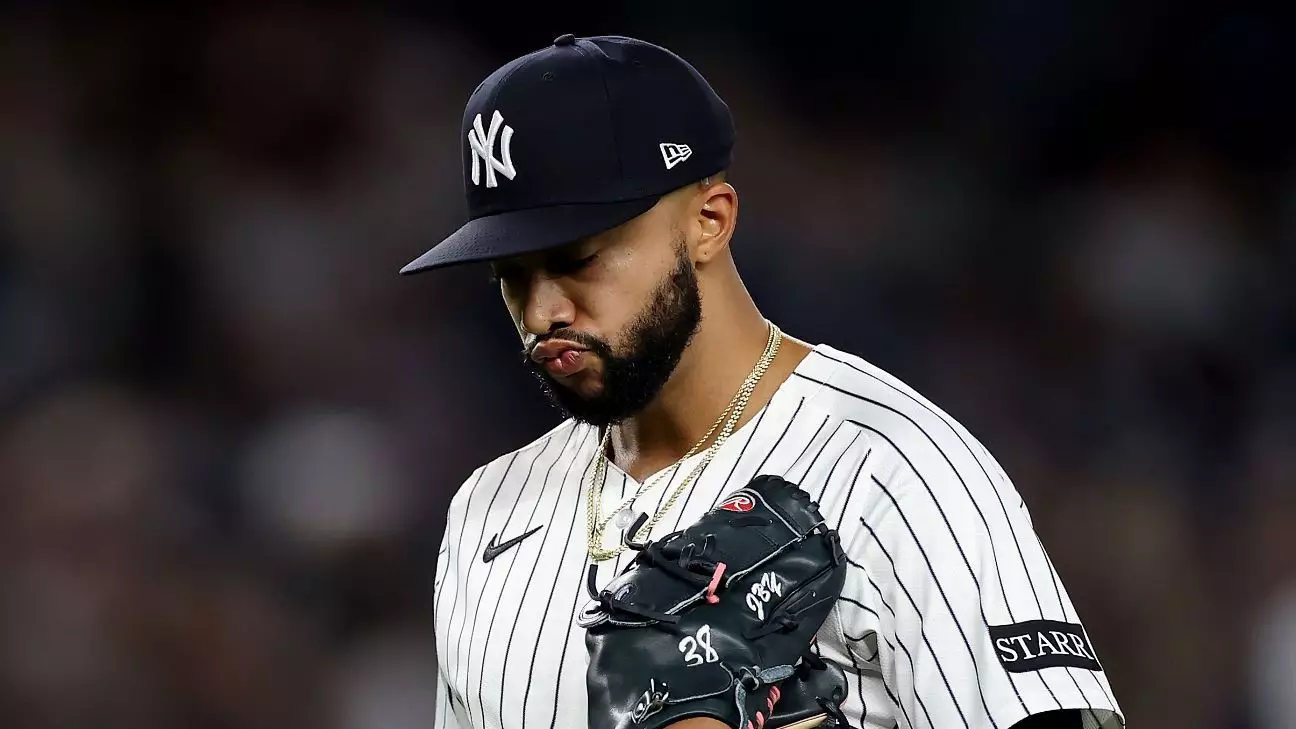In the high-stakes world of Major League Baseball, few pressures are as palpable as those experienced by a team’s closer. For Devin Williams, the New York Yankees’ newly acquired relief pitcher, this truth has come crashing down in recent performances. After a disheartening outing against the Toronto Blue Jays, the clangor of disapproval from Yankee Stadium echoed with an unsettling clarity. This wasn’t just a game lost; it was a public negotiation between potential and reality. Yankees manager Aaron Boone’s hesitance to fully commit to Williams as the team’s closer moving forward underscores not only the gravity of the situation but also hints at the complexities involved in maintaining performance under such scrutiny.
Williams, a two-time All-Star once celebrated for his dominating presence on the mound, has stumbled spectacularly since donning the iconic pinstripes. Following his transition from the Milwaukee Brewers, where he boasted an impressive 1.83 ERA, the expectations were towering. Yet, amidst the cheering crowds, the glow of promise has dimmed. Boone’s ambiguous response regarding the potential for a temporary shift from the closer role exemplifies the delicate balancing act between supporting an athlete and acknowledging their evident struggles.
The Weight of Expectations
The Yankees brought Williams to New York not merely as a player but as a game-changer, envisioned as a linchpin in the bullpen alongside standout Luke Weaver. Yet Williams’ recent performance, including an 11.25 ERA spanning ten appearances, reveals a disturbing trend – one that raises questions about his mental fortitude and physical capabilities. The stark contrast from his earlier seasons is disheartening not only for fans but for the player himself. As he faced a barrage of boos after a lackluster performance, his internal battle became all too public. “Just nothing’s working right now,” he lamented, a stark admission that resonates with anyone who’s faced crushing disappointment.
The uncertainty presented by Williams’ command issues speaks to a larger reality for athletes: the mental game that unfolds even before stepping onto the field. Williams has slid from a formidable 40% whiff rate to a considerably lower 24.1%, making his current struggles even more striking. Command issues have historically haunted him early in seasons, but the level of difficulty he faces now is collective – a symphony of failure where the conductor is a mixture of pressure, expectation, and perhaps, self-doubt.
Fans’ Expectations vs. Reality
The reactions of Yankee fans serve as a reflection of the club’s rich history and the weight of expectation that accompanies it. “We want Weaver!” they chanted, throwing their support behind the reliever who has yet to falter this season. Such fervent cries from fans illustrate an acute impatience and a demand for excellence that is often normalized in professional sports. Yet, is this level of scrutiny helpful, or does it risk further embedding a performer in the cycle of anxiety and poor execution? Williams seems to feel the impact of the fans’ disapproval, and while he claims indifference, the implications of such public perception can be profound.
When a player fails to meet expectations in such a high-pressure environment, the consequences extend beyond mere statistics. They can influence team cohesion, morale, and ultimately, the trajectory of careers. Williams’ situation poses a fundamental question: How can an athlete navigate their way back to peak performance amidst external chaos and internal strife?
The Path Forward: Navigating the Rough Waters of Performance
For Williams, the potential road to redemption lies in deciphering the underlying issues plaguing his performance. He acknowledges the personal responsibility to “continue to work and hopefully get some better results here,” a step that shows self-awareness and a desire for growth. The upcoming discussions between Boone and Williams will be pivotal. Boone’s role will be more than a managerial one; it will require nuanced leadership to cultivate an environment where Williams can rebuild his confidence.
There’s an opportunity here, one that could transform a narrative of struggle into one of resilience. Williams must harness the support around him, draw from the wealth of experience he’s amassed over his career, and remind himself of the attributes that made him a sought-after asset during the offseason. Returning to a routine that fosters his throwing mechanics and steadying nerves under pressure, coupled with mentorship from seasoned teammates, could be instrumental.
Success in the world of sports is not merely about talent and skill; it intertwines with mental strength, adaptability, and the ability to rise after a fall. As Williams navigates this challenging stretch, the baseball world will watch with bated breath, intrigued to see if he can reclaim the brilliance that once made him one of the league’s most elite relievers. Ultimately, the story of Devin Williams may yet evolve from tumult to triumph—a testament to resilience in the face of daunting challenges.


Leave a Reply